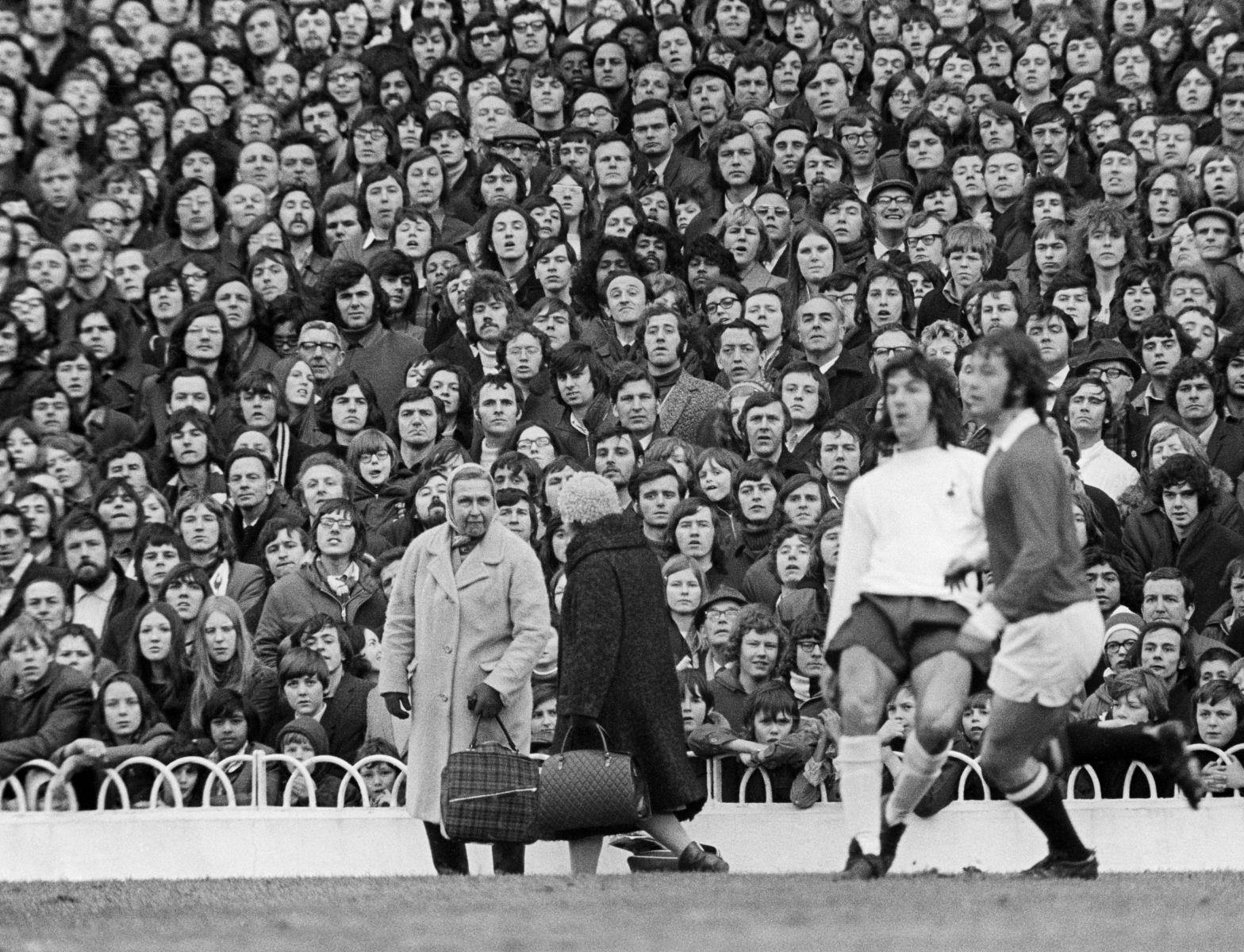On Fandom was first published in issue 6 of OOF Magazine in 2020.

Tottenham playing Manchester United at White Hart Lane in 1972
Reading time 5'
In ‘The Crying Book’, Heather Christle writes that early humans developed their lacrimal system as soon as they evolved from fish into terrestrial amphibians. As we generated the ability to shed tears, we wept for the home we left behind. What Christle doesn’t say is that, as humans have evolved – creating great innovations such as football – we found fresh ways to exercise our lacrimal glands.
For Newcastle United fans like myself, the tear ducts have been particularly busy. The last major trophy we won was the Fairs Cup in 1969 and it’s been decades of total mediocrity since. I’ve wept many times over the years, and as I have wiped the tears from my face I’ve often asked myself: why be a football fan?
The philosopher Jules Evans, writing in ‘The Art of Losing Control’, compares sport to a form of symbolic war. For Evans, football creates a space of ecstatic release that operates as a necessary relief valve for society’s more primal urges. The adrenaline of conflict is replaced by the drama of the last-minute winner. From weeping with joy to crying out in frustration, every supporter knows the fluctuating emotional commitment that accompanies being a fan.
Mike Wall’s photograph, documenting a match between Tottenham Hotspur and Manchester United in 1972, perfectly captures the transportive and obsessional essence of fandom. The sideburns and duffle coats recall a distant era and you can almost smell the aroma of Bovril and Pukka Pies permeating the stands at half time.
The image is shot from a low angle, the ball out of frame, holding us in an uncertain space. It is framed from the right by a player’s outstretched arms and legs. In the foreground, two footballers are captured slightly out of focus, involved in a tussle. Wall directs our attention to the background of the picture, filled with the faces of a captivated crowd. In front of them, in the middle of the image, are two women nattering away, seemingly oblivious to the drama around them. We’re left unsure as to who they are, what they’re doing there.They seem totally un-fussed by the action that captivates the crowd.
The picture is curious in its inversion of the usual sporting dynamic, directing us away from the action to the drama of reception. I’m reminded of Walter Sickert’s depictions of theatre audiences at the turn of the twentieth century. Sickert turns his focus away from the stage and fixes his gaze on people rapt in attention. These paintings encourage the voyeuristic attraction of looking at people looking. The American photographer Weegee was similarly fascinated by audience dynamics, and his infra-red photographs of cinemas capture the incidental and illicit thrills of a mid-century darkened auditorium. Often shot from an elevated position, those black and white photographs have an odd surrealism, heightened by their disorientating perspective and directional lighting. More recently, Andreas Gursky’s large-scale photographs of nightclubs full of enraptured dancers capture a sense of collective euphoria. Looking at these works, our eyes scan the uninhibited crowd, zooming in and out of individual and collective detail. In turn, Gursky’s photographs evoke Bruegel the Elder’s sixteenth-century paintings of carnivals and street parties.
These disparate artists articulate the persistent quest for collective transcendence. Writing this text in the middle of a pandemic, with physical distancing in place, the works feel permeated by a melancholic air. From dance floors to stadia and religious sites, most societies have designated spaces for people to lose their sense of self. While theatre and cinema personalise this encounter, they also seek to transport us out of the preoccupations of everyday life. The philosopher and novelist Iris Murdoch articulated this quest for transcendence as ‘unselfing.’ For Murdoch, a communion with art or nature removes the veil of anxiety and worry that conceals the deeper significance of the world around us.
While ego-loss offers an important release valve for society it is often heavily policed, denigrated as hedonistic in excess. The football stadium segregates emotional catharsis from daily life. The presence of crowds – and the heightened emotionalism that they elicit – has often been met with fear throughout history. In the nineteenth century, French psychologist Gustave Le Bon characterised crowds by their impulsiveness and lack of judgement, governed by emotion rather than reason.
While largely discredited, you can see Le Bon’s rhetoric in the ways in which the legitimate grievances of protesters can be invalidated by characterising the crowd as an angry mob. Likewise, fandom has often been conflated with uncritical adoration and, at worst, fanaticism.
When we look at Wall’s photograph, we see an image of people captivated by a group of men kicking a ball around a field. We can also read in the image a common space, a temporary community united in a shared purpose. When I look at this image, I see people seeking that ecstatic moment, desperate to cry with joy rather than weep in frustration.